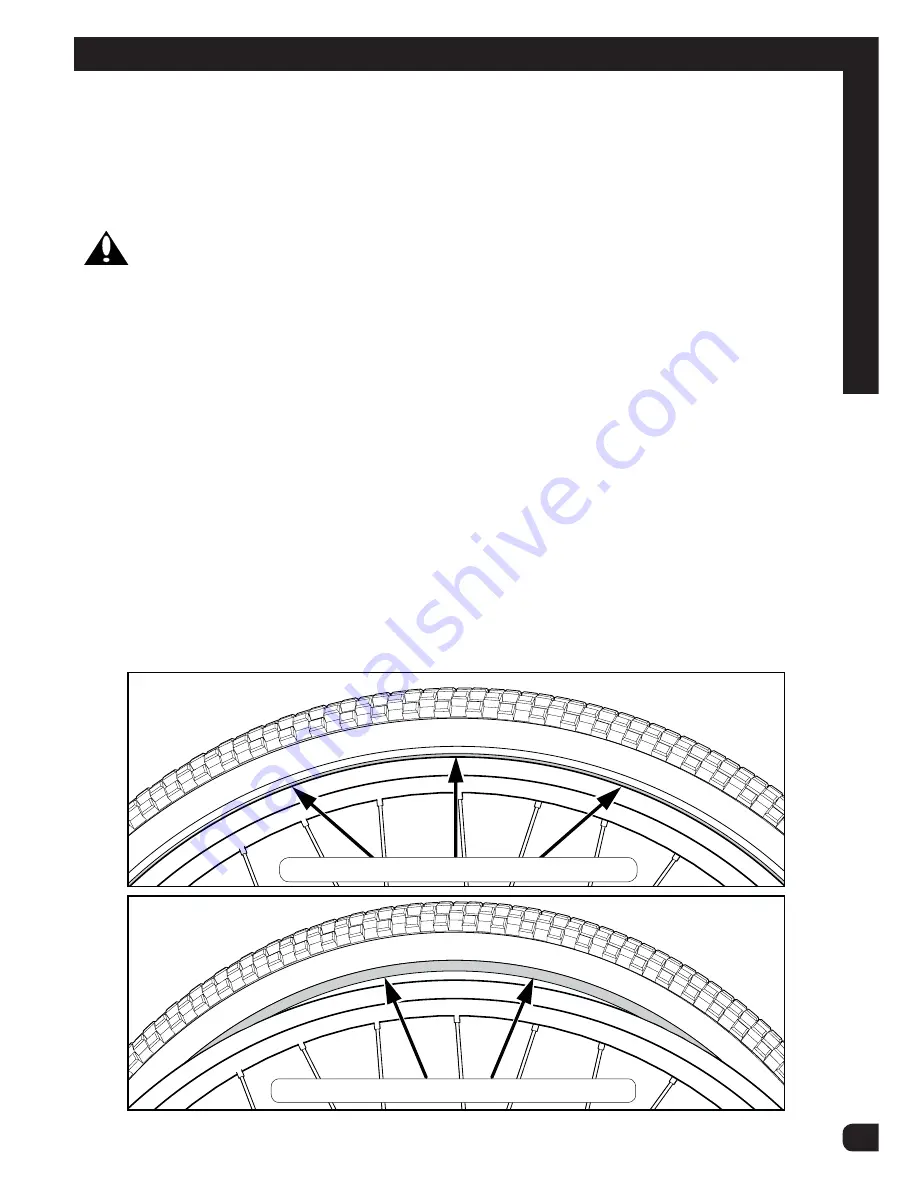
33
Tires
Maintenance:
• Frequently check the tire infl ation pressure because all tires lose air slowly over
time. For extended storage, keep the weight of the bicycle off the tires.
• Do not use unregulated air hoses to infl ate the inner tubes. An unregulated hose
can suddenly over infl ate bicycle tires and cause them to burst.
• Replace worn tires.
WARNING:
Do not ride or sit on the bicycle if a tire is under infl ated. This can
damage the tire and inner tube.
Infl ating the Tires:
• Use a hand or a foot pump to infl ate the tires.
• Service station meter-regulated air hoses are also acceptable.
• The maximum infl ation pressure is shown on the tire sidewall.
• If two infl ation pressures are on the tire sidewall, use the higher pressure for on-
road riding and the lower pressure for off-road riding.
• The lower pressure will provide better tire traction and a more comfortable ride.
Before adding air to any tire, make sure the edge of the tire (the bead) is the same
distance from the rim, all around the rim, on both sides of the tire. If the tire does not
appear to be seated correctly, release air from the inner tube until you can push the
bead of the tire into the rim where necessary. Add air slowly and stop frequently to
check the tire seating and the pressure, until you reach the correct infl ation pressure.
fig 17
Tire Bead Seated Correctly
Tire Bead NOT Seated Correctly
Maintenance and Service




































